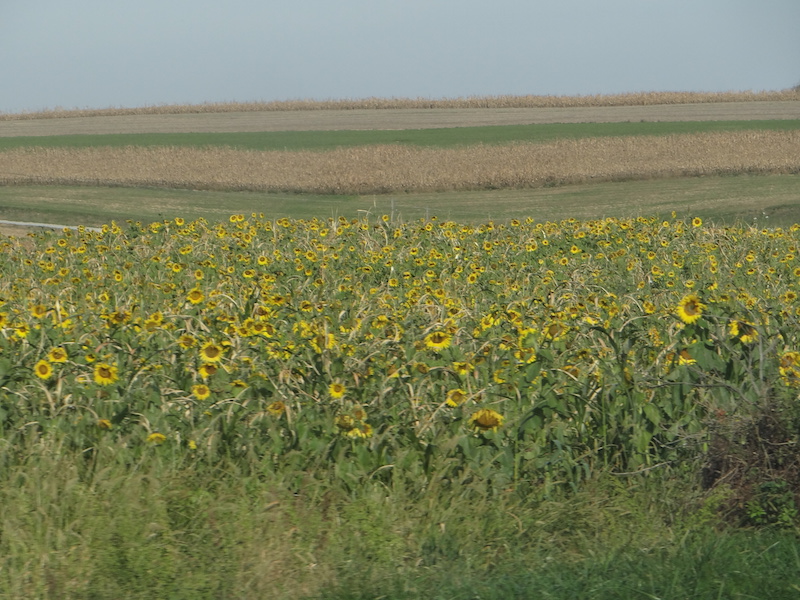My husband was driving and I had the camera while were were en route to Meadowbrook. I had been meaning to take some snapshots of a huge amount of acreage along either side of Rt 97N in Carroll County that was devoted to growing sunflowers this year. (Note to self—remember to stop the car to take photos if you haven’t adjusted camera settings or you get blurry pictures!)
I had seen this planting scheme several years earlier — also in Pennsylvania– and thought it was a one-off since subsequent years saw corn or soybeans in the same acreage. However, I learned that planting sunflowers is considered cover cropping of a relatively new sort and is also prompted as a conservation method.
Well, how so? asks the curious and well-informed reader…
First, sunflowers pull up soil nutrients being good at teaming up with a type of micchoriza that penetrates their roots. (Science speak from Front Microbial:) ”These auricular micchorizae (AMF) are considered natural biofertilizers, since they provide the host with water, nutrients, and pathogen protection, in exchange for photosynthetic products. Thus, AMF are primary biotic soil components which, when missing or impoverished, can lead to a less efficient ecosystem functioning. The process of re-establishing the natural level of AMF richness can represent a valid alternative to conventional fertilization practices, with a view to sustainable agriculture.”
Farmers look at Carbon to Nitrogen proportions for leaves, roots, stems and flowers and as one farmer-blogger put it: “What that data says to me is that sunflowers are good to plant in troubled soil that’s going to be taking the whole summer off”. Sunflowers can be planted alongside understory companion cover crops — especially legumes or buckwheat—which appears to be the case in these fields. This gives greater weed suppression and nitrogen fixation while attracting beneficial insects. Sunflowers can be the “cash crop”. but in December it looked as though these oil seed type sunflowers had not been harvested for use, so apparently are a cover crop only.
Our Maryland Department of Agriculture offers a cover crop program that helps in the efforts toward stewardship of Chesapeake Bay. Planting cover crops retains nitrogen and other nutrients while preventing the erosion that leads to sediment in neighboring water courses–ultimately to the Bay. The EPA refers to this as Maximum Daily Load milestones to meet and our farmers are responding positively. Meanwhile, these cover crops build the soil with organic matter. You may have also noted the no-till methods being used; for example sunflowers can be planted directly into the previous wheat stubble.
So, when out and about, take note and appreciate the efforts of many of our Carroll County farmers being good land stewards!



